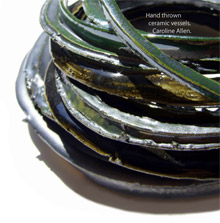Camille Shepherd (University of Winchester)
This paper examines hoarding practice across Southern Britain with particular focus on the Thames, Itchen and Avon river valleys and the south coast. It discusses variation in regional hoarding practice and suggests that deposition can be interpreted as being an integral part of the creative process of bronze metalworking due to the large proportion of hoards containing ‘fresh’ metalworking debris or objects which appear to have been created only to be deposited. My previous work has focused extensively on the landscape context of bronze age hoard findspots and has discussed the frequent occurrence of hoard findspots in areas that either would have been suitable for metalworking or have clear signs of metalworking nearby.
Central to my research is the meaning of metal and the significance of metalworking in Bronze Age society and “…why the stuff was put into the ground in such quantities in the first place” (Barber 2002, 42). Stevens and others have also suggested that in the Bronze Age metalwork items may have had ‘biographies’ that formed around them (2008, 242), having life phases seen as similar to those of humans (Kopytoff 1986) and a ‘social life’ as things (Appadurai 1986) beginning with their transformation from raw elements into an object, giving them their ‘form and finality’ (Hoskins 1998, 4). Journeys taken by the raw materials or the finished objects, for example from their ore source to point of transformation into a finished object or from one region to another through trade, could also become ‘biographically embedded’ into a piece (Stevens 2008, 244). Object associations or specific types, for example a hoard of body ornaments, might be representative of “metaphorical bodies in the form of an ornamented body and in the bodily inscription of landscape that brought about the act of deposition” (Stevens 2008, 93). My paper applies these theories to the evidence from southern Britain and then suggests some possible ‘biographies’ that can be read from several assemblages in the study area.
Finally, I will discuss and compare theories of deposition as a creative ceremonial practice in the study area, with reference to archaeological evidence at several sites (i.e. artistic arrangement of objects in the ground, evidence of waterfront structures used in votive rituals, etc) that illustrate aspects of the ceremonial rituals that may have accompanied depositional practice.
References
- Appadurai, A. (ed.) 1986. The Social Life of Things. Cambridge University Press.
- Barber, M. 2002. Bronze and the Bronze Age. Stroud, Tempus.
- Kopytoff. 1986. The cultural biography of things: commoditisation as process. In Appadurai, A. (ed.) The Social Life of Things, 64-91. Cambridge University Press.
- Stevens, F. 2008. Elemental Interplay: the production, circulation and deposition of Bronze Age metalwork in Britain and Ireland. World Archaeology 40(2), 238-252.


